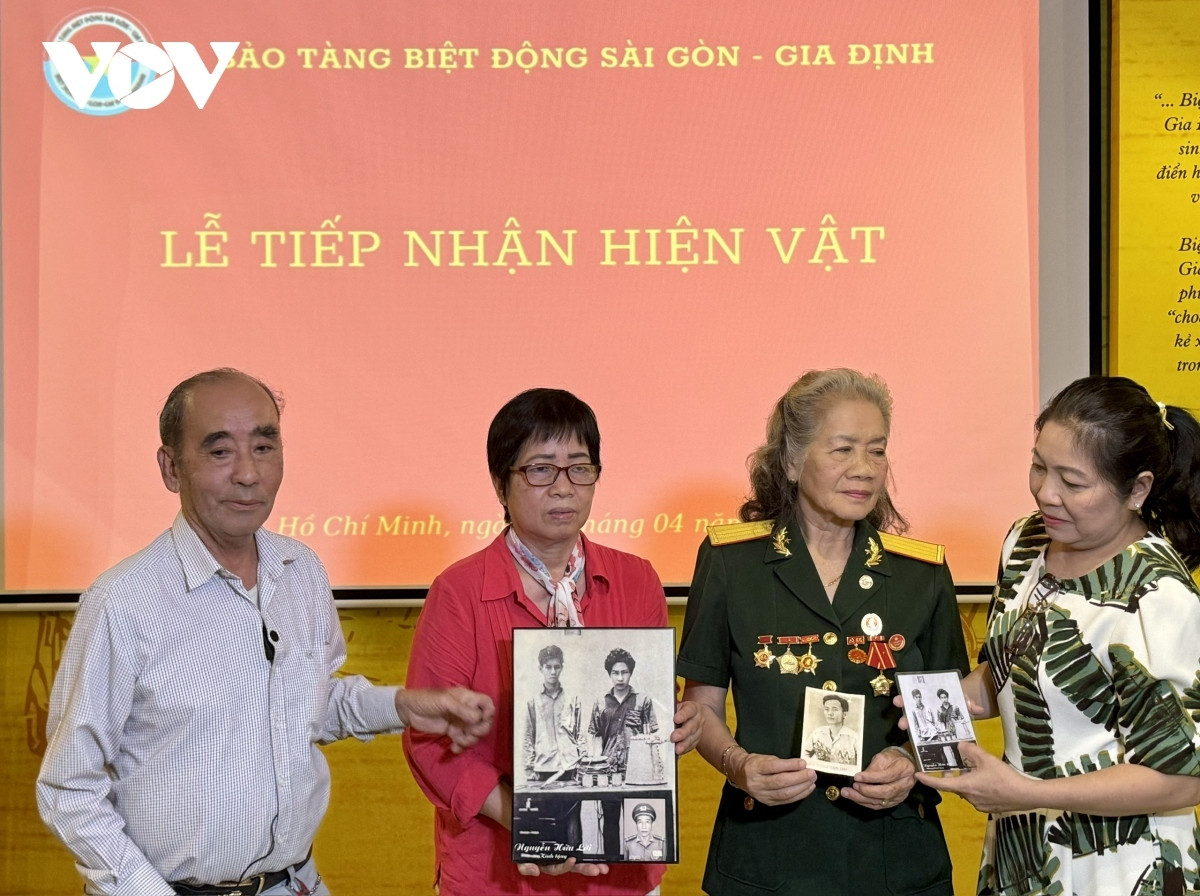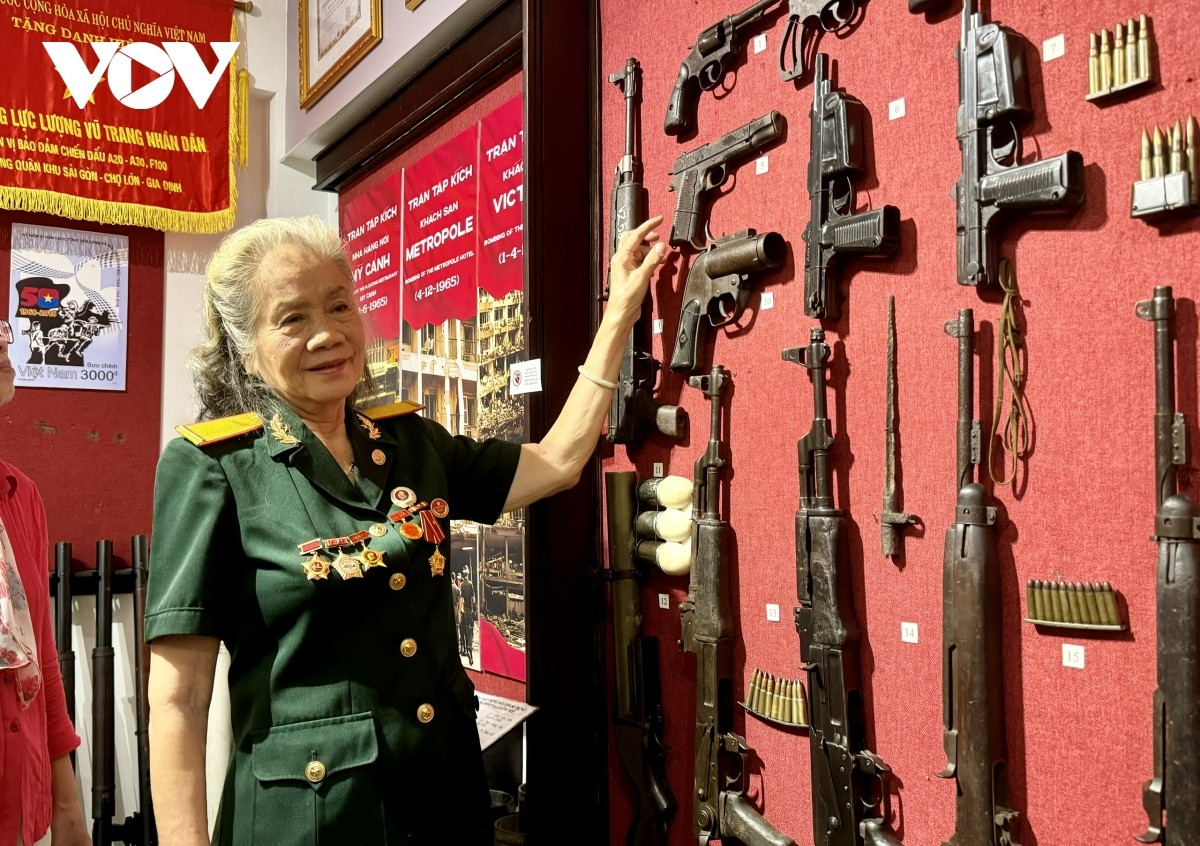
In particular, the emotions of contemporaries who witnessed the city on April 30, 1975, are even more special.
Joy like a dream
During the resistance war to liberate the South for the cause of national reunification, there was a special force in Ho Chi Minh City, formerly known as Saigon, that contributed to the resounding victories of the entire nation.

Huynh Van Can, nicknamed Tu Trung, was a member of Team B2 of the Saigon Rangers during the resistance war. He said that he was in the same team with several heroes who sacrificed their lives, with their names being given to streets that today almost everyone in Ho Chi Minh City has heard of. These include Banh Van Tran, nicknamed Nam Vung, and Dong Den, whose real name was Nguyen Van Kip.
In 1975, engaging in the Ho Chi Minh Campaign, due to work requirements Tu Trung was mobilised to serve as a scout and B41 gunner of the Gia Dinh Regiment, attacking Xuan Thoi Thuong and Ba Diem - Hoc Mon.
On the night of April 28, 1975, he and his unit marched to camp at Tham Luong Bridge at the northern gateway of Saigon, on Truong Chinh street of District 12 today, to help Vietnamese army's tanks enter the city.
On the night of April 29, 1975, Tu Trung and his unit continued to march into the inner city moving towards Lu Gia residence, searching Chi Hoa and returning to take position at the Bay Hien intersection which was a notoriously fierce place at that time.
At noon on April 30, 1975, when Saigon was liberated, troops planted the flag on the roof of the Independence Palace and Saigon President Duong Van Minh surrendered unconditionally, leading to people in the Bay Hien area poured into the streets to celebrate the victory. Following this historic event, the residents went home to cook rice and bring it to the soldiers to celebrate the victory.
Tu Trung said that he has never been so happy as in that moment. He recalled that at that time he did not have any military uniform, he wore whatever he had, but people still recognised him and his soldiers.
Also a Saigon Ranger soldier, Lai Thi Kim Tuy (Sau Tuy) of the Ranger Team Region 3 - Division 2, and her comrades entered the city from Cu Chi district.
Even though she was injured in Cu Chi on April 29, Sau Tuy still wanted to join her fellow soldiers in their burning wish to witness the liberation of Saigon.
"The situation at that time was completely different from the day before and the day after. On April 29, it was still under the old regime, completely different from April 30, when our troops took over Saigon. People were very excited and rushed to streets to wave flags and banners to welcome soldiers and revolutionary forces," Kim Tuy recalled.

In the memories of historical witnesses of April 30, 1975, Banh Thi Le was the daughter of a commando soldier of Banh Van Tran, nicknamed Nam Vung, and had a quite special memory.
Hero of the armed forces Banh Van Tran died in 1967 and from then until 1975, his family lived and became involved in extremely difficult revolutionary activities in the heart of Saigon’s inner city.
Living near Tan Son Nhat airport, Banh Thi Le's family and her relatives had to dig tunnels in order to avoid stray bombs and bullets.
On Liberation Day, Le was just then 15 years old. Along with her grandmother, mother, and siblings, they all burst with joy, pride, and emotions when the sacrifices of Banh Van Tran and many other revolutionary soldiers came to fruition.
Le said, "My house was near the airport, with every one seeing bullets being shot in terror and they dug tunnels to hide. At noon on April 30, everyone was filled with joy and excitement as the city was liberated. Everyone was so happy and excited to shout the city was totally liberated after so many years of long wait."
Witnessing the southern city’s changes
A total of 49 years after liberation, Saigon soldiers like Tu Trung, Sau Tuy, the daughter of special forces soldier Banh Van Tran, Ms Banh Thi Le still continue to live and work in Saigon, now known as Ho Chi Minh City. They contributed to the southern city's building and development after the war.
Tu Trung occasionally has the opportunity to pass by the Bay Hien intersection and still silently admire the rows of tree in the campus of Thong Nhat Hospital today with old memories of the row of low trees that used to hold an umbrella hammock, now the trees have grown for decades and it is difficult for him to recognise them.
Sau Tuy - Lai Thi Kim Tuy is the same. Although she is old, she remains agile and lucid, still gently telling the next generation about her days serving as a special force liaison. For her, it is obvious that anyone in that situation would also do the same.
She shows her elation at the sacrifices and losses of her comrades for this city which were truly of great significance.
That's when Sau Tuy witnessed the daily changes of Saigon - Ho Chi Minh City. "In the past, on both sides of Cu Chi- Hoc Mon road were wasteland going down to Go Vap. Now it's all city land, street land, it's no longer the old wasteland. Life is totally different," she stated.
The Saigon Ranger soldiers, and Saigonese people who engaged in the revolution before 1975, still consider their activities and those of their fathers and brothers as something that all people who have lost their country would do. Therefore, sometimes they just keep the memories to themselves.
The memories of April 30, 1975, of the historical witnesses who went through the war have a very special meaning and need to be preserved.
VOV